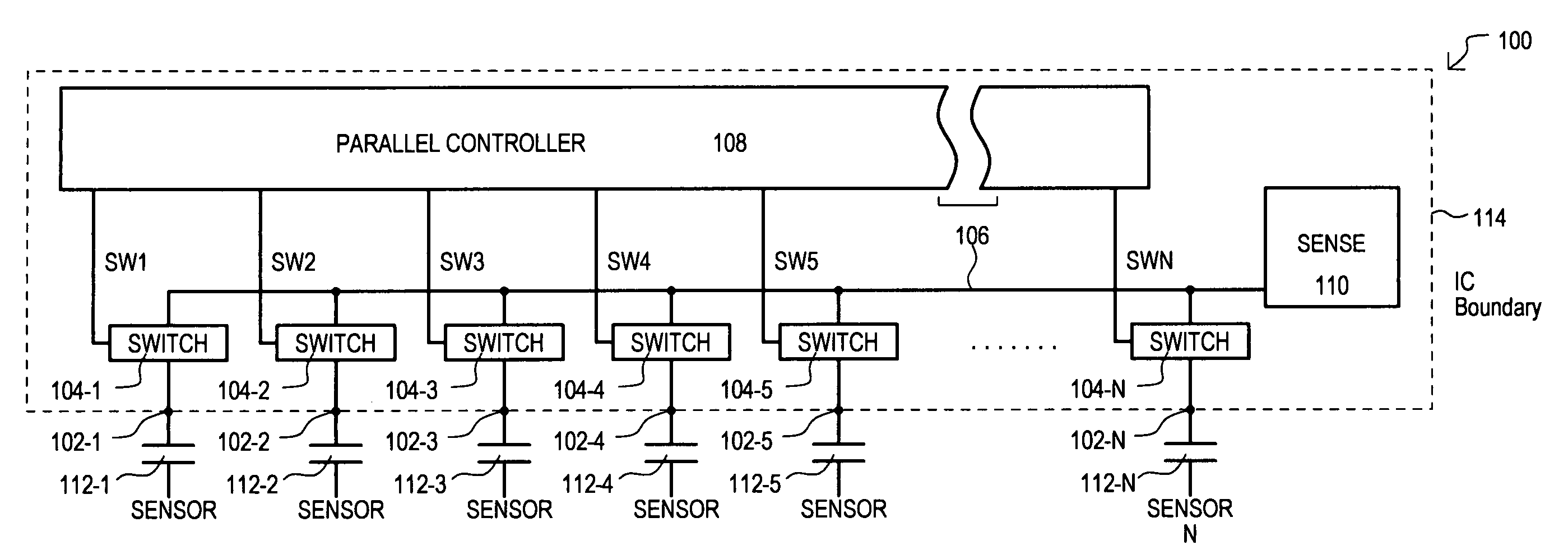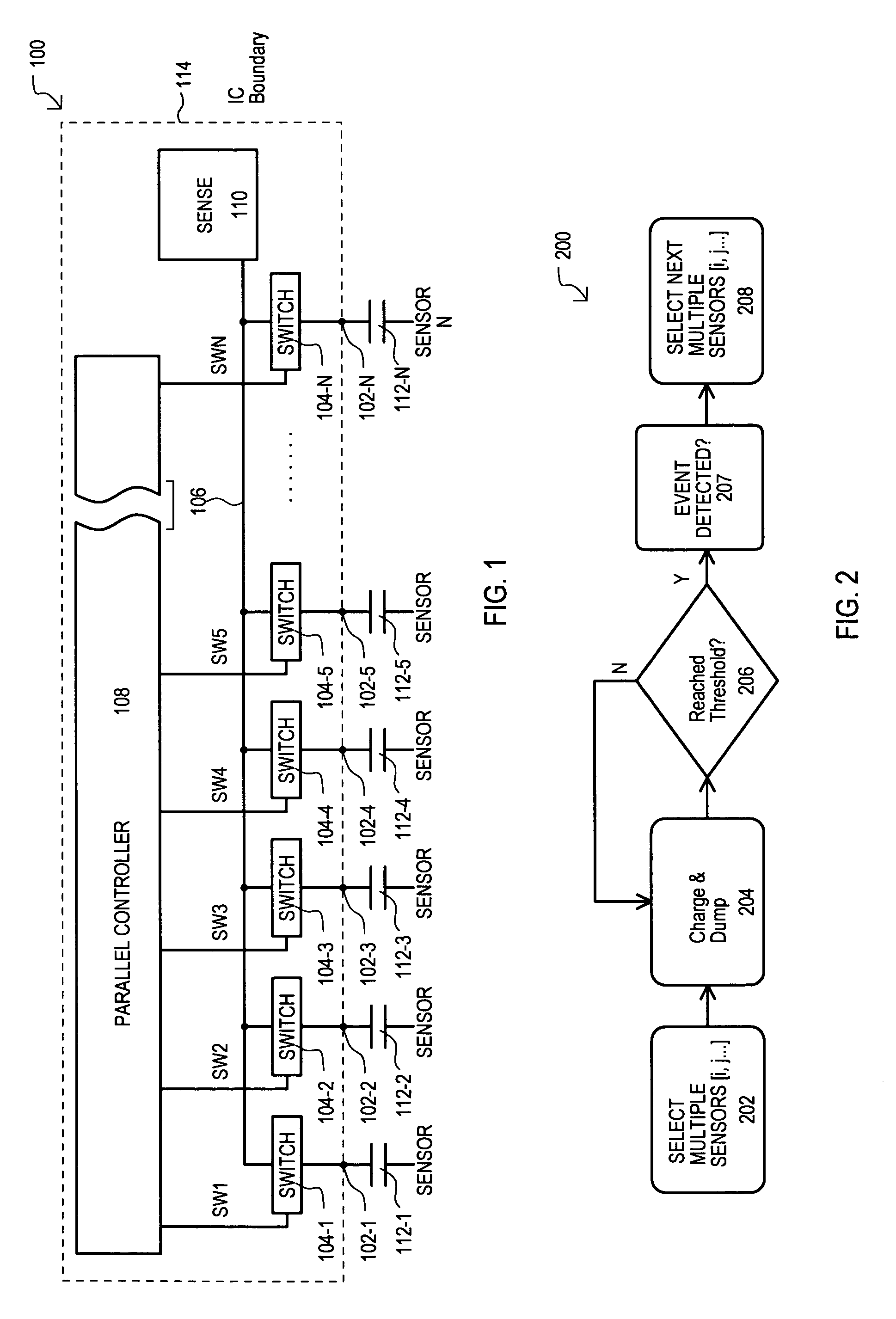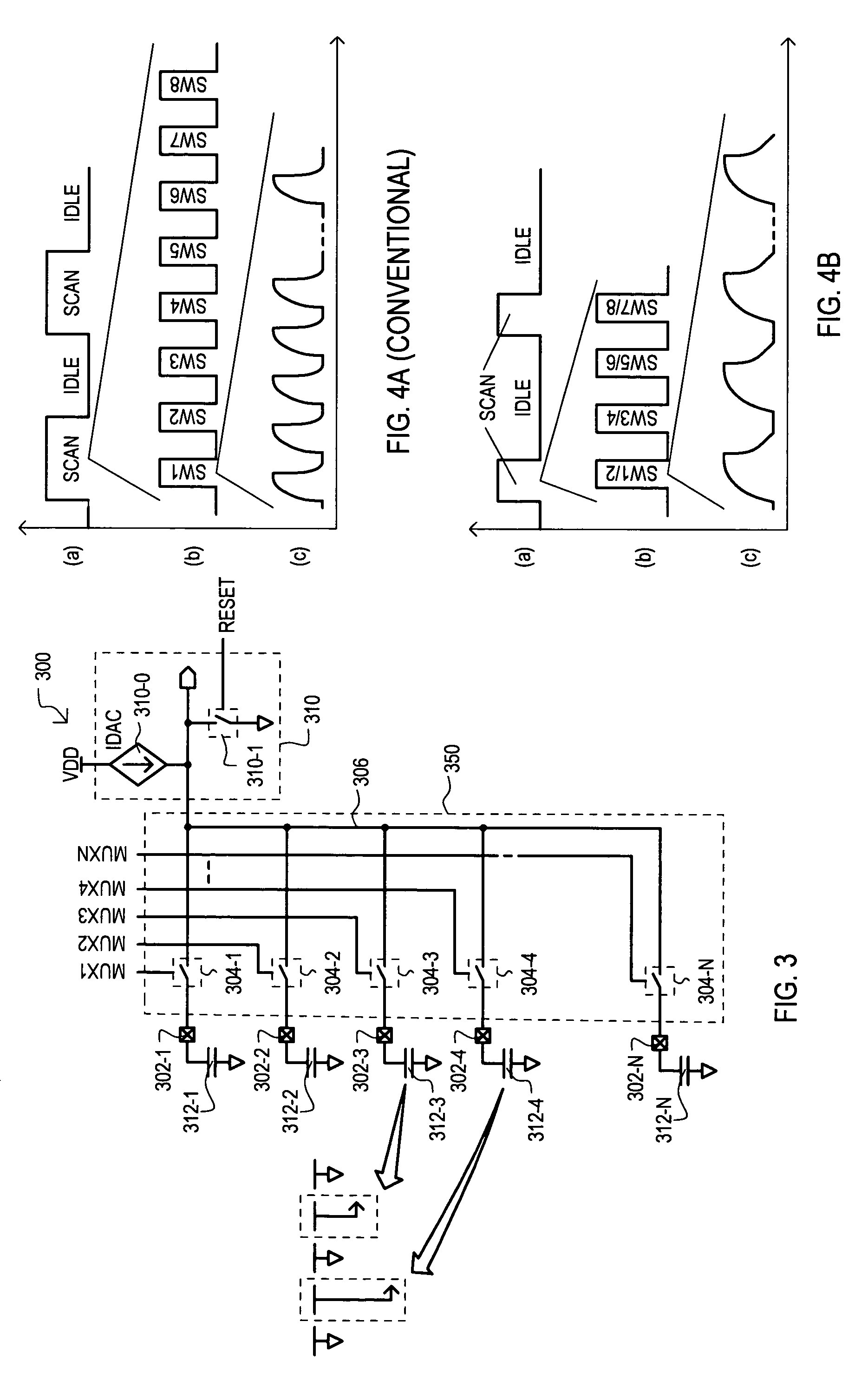Scan method and topology for capacitive sensing
a capacitive sensing and topology technology, applied in the direction of resistance/reactance/impedence, instruments, measurement devices, etc., can solve the problems of increasing the circuit components of the resulting system, and the need for an extra inpu
- Summary
- Abstract
- Description
- Claims
- Application Information
AI Technical Summary
Benefits of technology
Problems solved by technology
Method used
Image
Examples
embodiment example
[0099]The embodiment example assumes the same general system values as the preceding conventional case. However, it will be assumed that two capacitive sensors are grouped together. Accordingly, in such an arrangement, a background count (no load) can be 250 counts, while a loaded count can be 246 counts.
[0100]Within the system, noise resulting from quantization remains at 0.3 rms. However, the comparator adds 0.25 rms, as the steps for counting are larger. This can yields an rms noise value of 0.4.
[0101]A calculation of the SNR in dB is given as:
20 log10(4 count signal / 0.4 count noise)=20.0 dB.
From the above, sensing based on combining two capacitive sensors results in a loss of 8.5 dB, which is less than a full factor of four. This loss in SNR is believed to be outweighed by the 4× increase in scan speed for an array of capacitive sensors, and corresponding reduction in power consumption.
[0102]It is understood that the embodiments of the invention may be practiced in the absence o...
PUM
 Login to View More
Login to View More Abstract
Description
Claims
Application Information
 Login to View More
Login to View More - R&D
- Intellectual Property
- Life Sciences
- Materials
- Tech Scout
- Unparalleled Data Quality
- Higher Quality Content
- 60% Fewer Hallucinations
Browse by: Latest US Patents, China's latest patents, Technical Efficacy Thesaurus, Application Domain, Technology Topic, Popular Technical Reports.
© 2025 PatSnap. All rights reserved.Legal|Privacy policy|Modern Slavery Act Transparency Statement|Sitemap|About US| Contact US: help@patsnap.com



